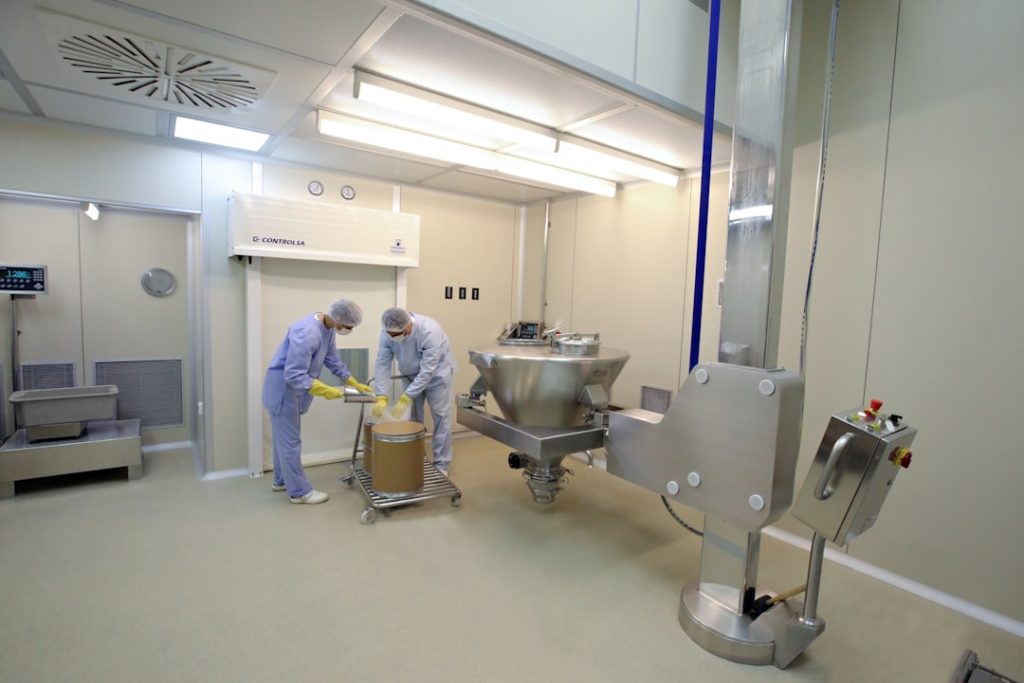In the rapidly evolving landscape of clinical research, the need for efficiency and accuracy has never been more pronounced. Real Time Management Systems (RTMS) have emerged as a pivotal innovation, enabling researchers to monitor and manage clinical trials with unprecedented immediacy. These systems facilitate the collection, analysis, and dissemination of data in real time, allowing for timely decision-making and enhanced operational efficiency.
The integration of RTMS into clinical trials represents a significant shift from traditional methodologies, which often rely on delayed data reporting and retrospective analysis. The essence of RTMS lies in its ability to provide stakeholders—including researchers, sponsors, and regulatory bodies—with instantaneous access to critical trial data. This immediacy not only enhances transparency but also fosters a collaborative environment where all parties can engage in informed discussions based on the latest findings.
As clinical trials become increasingly complex, characterized by multi-site operations and diverse patient populations, the demand for real-time insights has surged. Consequently, RTMS is not merely a technological advancement; it is a fundamental transformation in how clinical trials are conducted and managed.
Key Takeaways
- Real Time Management Systems enhance efficiency and data accuracy in clinical trials.
- Key features include real-time data capture, monitoring, and analytics.
- Successful implementation requires integration with existing workflows and staff training.
- Challenges include data security, system complexity, and regulatory compliance.
- Future trends point to AI integration and increased automation for optimized trial management.
Benefits of Real Time Management Systems in Clinical Trials
The advantages of implementing Real Time Management Systems in clinical trials are manifold, significantly impacting both operational efficiency and data integrity. One of the most notable benefits is the enhancement of patient safety. By enabling real-time monitoring of adverse events and other critical safety parameters, RTMS allows researchers to respond swiftly to potential issues.
For instance, if a particular treatment regimen is associated with unexpected side effects, the system can alert investigators immediately, facilitating prompt intervention and safeguarding participant well-being. Moreover, RTMS contributes to improved data quality and accuracy. Traditional data collection methods often involve delays that can lead to discrepancies or errors in reporting.
In contrast, real-time systems ensure that data is captured as it occurs, reducing the likelihood of inaccuracies that can arise from retrospective data entry. This immediacy not only bolsters the reliability of trial outcomes but also enhances compliance with regulatory requirements. Regulatory agencies increasingly demand rigorous data management practices, and RTMS provides a robust framework for meeting these standards.
Key Features of Real Time Management Systems

Real Time Management Systems are characterized by several key features that distinguish them from conventional data management tools. One of the most critical features is their ability to integrate seamlessly with various data sources, including electronic health records (EHRs), laboratory information systems, and patient-reported outcomes platforms. This interoperability ensures that all relevant data is aggregated in one centralized location, providing a comprehensive view of trial progress and participant health.
Another essential feature is advanced analytics capabilities. RTMS often incorporates sophisticated algorithms and machine learning techniques that enable researchers to analyze data trends in real time. For example, predictive analytics can identify potential recruitment bottlenecks or forecast patient dropout rates based on historical data patterns.
This proactive approach allows trial managers to implement corrective actions before issues escalate, thereby optimizing resource allocation and enhancing overall trial efficiency. Additionally, user-friendly dashboards are a hallmark of effective RTMS. These dashboards present complex data in an easily digestible format, allowing stakeholders to visualize key performance indicators (KPIs) at a glance.
Customizable reporting tools further enhance usability, enabling users to generate tailored reports that meet specific needs or regulatory requirements. The combination of these features empowers clinical trial teams to make informed decisions quickly and effectively.
Implementing Real Time Management Systems in Clinical Trials
| Metric | Description | Typical Value / Range | Impact on Clinical Trials |
|---|---|---|---|
| Data Latency | Time delay between data capture and availability in the system | Seconds to minutes | Enables near real-time decision making and faster issue resolution |
| Data Accuracy | Percentage of data entries without errors | 95% – 99.9% | Improves reliability of trial outcomes and regulatory compliance |
| Patient Enrollment Rate | Number of patients enrolled per week/month | Varies by trial phase and indication | Monitored in real-time to optimize recruitment strategies |
| Query Resolution Time | Average time to resolve data queries | Hours to 1-2 days | Faster resolution reduces delays in data cleaning and analysis |
| Protocol Deviation Rate | Percentage of deviations detected during the trial | Typically <5% | Real-time alerts help minimize deviations and maintain trial integrity |
| Site Performance Metrics | Measures such as data entry timeliness and query response rate per site | Varies by site | Identifies underperforming sites for targeted support |
| System Uptime | Percentage of time the real-time management system is operational | 99.5% – 99.9% | Ensures continuous data flow and availability for stakeholders |
| Cost Savings | Reduction in operational costs due to real-time monitoring | Varies by trial size and complexity | Improves budget efficiency and resource allocation |
The implementation of Real Time Management Systems in clinical trials requires careful planning and execution to ensure success. The first step involves conducting a thorough needs assessment to identify the specific requirements of the trial. This assessment should consider factors such as the trial’s size, complexity, and the types of data that will be collected.
Engaging stakeholders early in the process is crucial; their insights can help shape the system’s design and functionality to better meet the needs of all parties involved. Once the requirements are established, selecting the right RTMS vendor becomes paramount. Organizations should evaluate potential vendors based on their track record in clinical research, the scalability of their solutions, and their ability to provide ongoing support and training.
A successful implementation also hinges on effective change management strategies. Training sessions for staff members are essential to ensure that all users are proficient in utilizing the new system. Additionally, fostering a culture that embraces technological innovation can facilitate smoother transitions and enhance overall acceptance of the RTMS.
Case Studies of Successful Implementation
Several case studies illustrate the successful implementation of Real Time Management Systems in clinical trials, showcasing their transformative impact on research outcomes. One notable example is a large-scale oncology trial conducted by a leading pharmaceutical company. Faced with challenges related to patient recruitment and retention, the company adopted an RTMS that integrated real-time data from multiple sites.
This system enabled trial managers to monitor recruitment metrics continuously and identify sites that were underperforming. As a result, targeted interventions were implemented at these sites, leading to a 30% increase in patient enrollment within just three months. Another compelling case involves a multi-center clinical trial for a novel cardiovascular drug.
The research team utilized an RTMS to track patient adherence to treatment protocols in real time. By analyzing data from wearable devices that monitored patients’ vital signs and medication intake, researchers were able to identify non-adherent patients promptly. This insight allowed them to engage with these patients directly, providing additional support and education about the importance of adherence.
Ultimately, this proactive approach resulted in improved patient outcomes and more robust trial results.
Challenges and Considerations in Using Real Time Management Systems

Despite the numerous benefits associated with Real Time Management Systems, several challenges must be addressed during their implementation and use in clinical trials. One significant concern is data privacy and security. The collection and storage of sensitive patient information necessitate stringent compliance with regulations such as the Health Insurance Portability and Accountability Act (HIPAA) in the United States or the General Data Protection Regulation (GDPR) in Europe.
Organizations must ensure that their RTMS incorporates robust security measures to protect against data breaches while maintaining compliance with these regulations. Another challenge lies in the integration of RTMS with existing systems and workflows. Many clinical research organizations utilize legacy systems that may not be compatible with modern RTMS solutions.
This lack of interoperability can lead to fragmented data management processes and hinder the overall effectiveness of real-time monitoring efforts. To mitigate this issue, organizations should prioritize selecting RTMS vendors that offer flexible integration options and provide support for transitioning from legacy systems.
Future Trends in Real Time Management Systems for Clinical Trials
As technology continues to advance, several trends are emerging that will shape the future of Real Time Management Systems in clinical trials. One notable trend is the increasing use of artificial intelligence (AI) and machine learning algorithms to enhance data analysis capabilities further. These technologies can automate routine tasks such as data cleaning and anomaly detection, allowing researchers to focus on higher-level analysis and interpretation of results.
Additionally, there is a growing emphasis on patient-centric approaches within clinical trials. Future RTMS will likely incorporate features that facilitate direct patient engagement through mobile applications or wearable devices. These tools can empower patients to report their experiences in real time, providing researchers with valuable insights into treatment efficacy and tolerability from the patient’s perspective.
Furthermore, as remote monitoring becomes more prevalent due to advancements in telemedicine, RTMS will need to adapt accordingly. The integration of remote monitoring capabilities will enable researchers to collect real-time data from patients regardless of their location, expanding access to clinical trials and enhancing diversity within study populations.
Conclusion and Recommendations for Optimizing Clinical Trials with Real Time Management Systems
To fully leverage the potential of Real Time Management Systems in optimizing clinical trials, organizations should adopt a strategic approach that encompasses several key recommendations. First and foremost, investing in comprehensive training programs for staff members is essential to ensure proficiency in utilizing RTMS effectively. This training should encompass not only technical skills but also an understanding of how real-time data can inform decision-making processes.
Moreover, fostering collaboration among stakeholders throughout the trial process can enhance communication and transparency. Regular meetings involving researchers, sponsors, regulatory bodies, and patients can facilitate discussions around real-time findings and promote a culture of shared responsibility for trial outcomes. Finally, organizations should remain agile and open to adopting emerging technologies that complement RTMS capabilities.
By staying informed about advancements in AI, remote monitoring tools, and patient engagement strategies, clinical trial teams can continuously refine their approaches and drive innovation within their research endeavors. In summary, Real Time Management Systems represent a transformative force in clinical trials, offering numerous benefits that enhance efficiency, safety, and data integrity. By addressing challenges thoughtfully and embracing future trends proactively, organizations can optimize their clinical trial processes and ultimately contribute to advancing medical knowledge and improving patient care.




